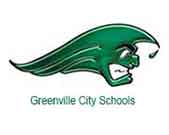|
|
 |
 |
Greenville City Schools
Equipping Students
with Problem Solving Skills
Ohio’s Learning Standards outline the necessary knowledge and skills
that will allow students to be prepared for college and careers.
Educators across the state have gained experience in teaching these
standards over the past few years. With feedback from the public, the
Ohio State Board of Education approved the revised standards for
mathematics in February. Even with the many changes that were made,
there is still concern from parents about the standards. Expressions
such as, “I don’t know how to help my child with their math homework.”
“I don’t get this new math!” have become a common reaction for many
parents. However, I assure you that the adoption of Ohio’s Learning
Standards is not a devious plan to keep parents out of the academic
lives of their children. Believe it or not, the math itself has not
changed. Students are still learning how to add, subtract, multiply and
divide. However, the way we are teaching and having students think
about mathematical concepts has changed. The reason for this change is
number sense.
Number sense refers to the understanding of numbers, their size,
relationships and how they are affected by different operations. The
key word here is understanding. John Allen Paulos, a Temple University
math professor and author, calls a lack of mathematical understanding
innumeracy- the mathematical equivalent of not being able to read. As
adults, many of us grew up memorizing mathematics. We knew our facts
because we memorized them. We knew formulas because we memorized
them. For some, the deeper understanding of the relationships
between the numbers, was lost in memorization. Teaching children number
sense and to become thinkers and problem solvers of mathematics allows
them to face everyday math situations with confidence because they are
equipped with different strategies for solving. It may not be the
strategy that makes the most sense to someone else, but it works for
that child. Once that child has gained the confidence and understands
the number sense behind the strategy then they are introduced to a more
efficient way of solving. Consider this analogy, when I moved to the
area I figured out one way to get to Walmart. I would take that route
every time because I knew that it would get me to my destination.
However, one day someone showed me a quicker way to get to Walmart. It
took less time and still got me to my destination. I had become more
familiar to the area, so it was easy for me to take a more efficient
path. Now let’s look at this from a mathematics perspective. Let’s say
that your child is learning two-digit addition. Your child breaks the
problem into place values parts and adds the tens and ones together to
solve the problem. It’s not the traditional regrouping algorithm, but
it still gives him or her the same result. Then once he or she
understands the number sense behind why the place value parts work to
solve the problem, and they can do it without error every time, then he
or she is introduced to the short cut or the standard algorithm. The
transition is easy and they understand why the algorithm works.
I know what you’re thinking, “this doesn’t help me, help my child with
their homework.” You are right, it doesn’t. What will help your
child is letting them explain to you how they solved it and how it
works. Ask them questions like, “how do you know?” or “why does that
work?” and don’t be afraid to say, “I didn’t learn math that way, show
me what you are thinking.” You might be surprised at what you learn
about number sense. It may not be the quickest way to Walmart but trust
me, in time, they will find the quickest way.
|
|
|
|

